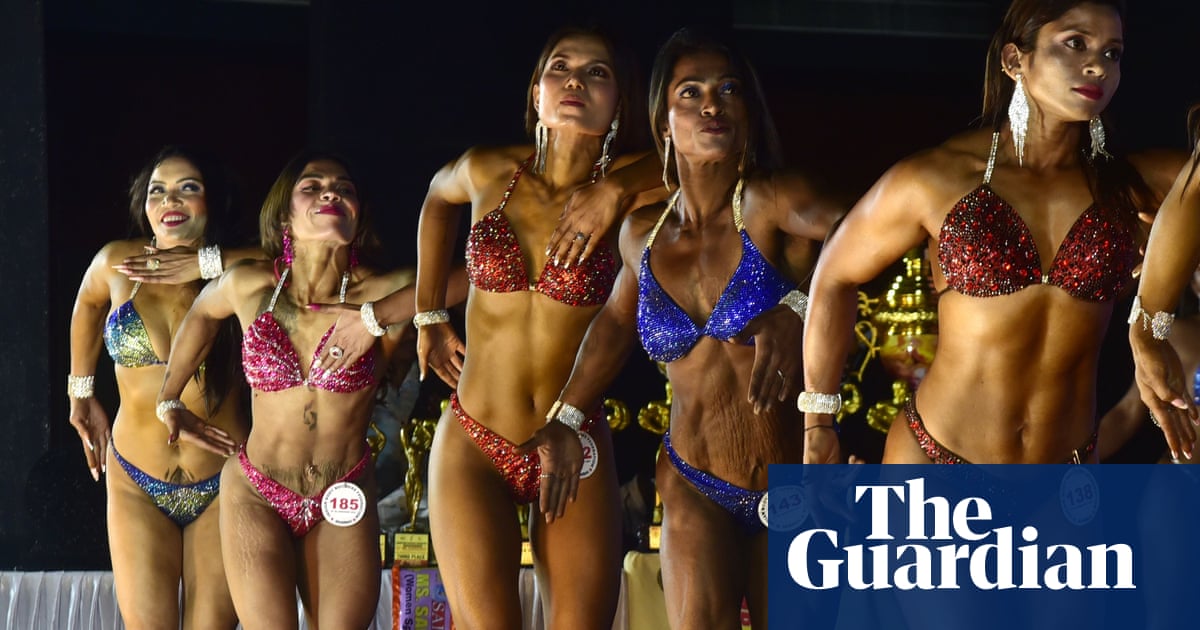What does it mean when we call a woman “too muscular”?
A muscular woman has historically been a difficult woman. The way we perceive beauty in the muscular form is influenced by many factors, not least of which is gender, and it goes far beyond aesthetics. “Too muscular” can call into question one’s identity as a woman: are you a real woman if your muscles are bigger than the societal norm? “Too muscular” can also be accusatory: are you a cheat, guilty of using steroids or other performance-enhancing drugs?
At a 2017 talk with students at Harvard, the ballet superstar Misty Copeland spoke about close-minded ideals of beauty. “Why am I being told my body is too muscular?” she said. “It’s code language for your skin is wrong.” The tennis great Serena Williams, in a 2016 interview with the Guardian, said that she has been described as “too muscly and too masculine, and then a week later too racy and too sexy”. In white-dominated spaces like ballet and tennis, “too muscular” can be code-speak for “too Black”, for bodies that don’t belong – often jumbling up issues of femininity, race and power.
“Too muscular” is also used to disparage transgender women and intersex athletes with naturally high levels of testosterone. The growing controversy over the participation of transgender women in athletic competition is rooted in muscle, and the perceived unfairness of muscles that come with puberty.
This, of course, disrupts the long-standing division of sports participation based on sex. The recent establishment of non-binary divisions for major marathons including the Boston Marathon and the New York City Marathon is one way that organizers of athletic competitions are addressing the issue. There will undoubtedly be more rethinking to come.
All kinds of wacky theories around hormones have been used to delegitimize women in power, connecting the body to the body politic: menopause has been called out as something that makes women unstable leaders (see: Clinton, Hillary), and yet testosterone is the hormone that actually makes people reckless (see: Clinton, Bill).
All this is to say that pseudoscience has long governed norms around women’s anatomy and biology – and, by extension, their strength and power in society. Maybe our viewing habits around muscular beauty have become a bit rigid. If we go back to the muscle itself, could that loosen up – and maybe even stretch – our thinking?
Amber Fitzsimmons is a modern-day anatomist – a professor of anatomy and chair of the department of physical therapy and rehabilitation science at the University of San Francisco, California (UCSF) who instructs students at one of the top medical schools in the country. She is also a physical therapist who has seen all kinds of real bodies enter the clinic. During my visit to her anatomy lab to observe a dissection, I asked what “too muscular” means to her, and she reminded me that Americans have been socialized to not want to see the female weightlifter body, the bulked-up form that became especially taboo in the 1970s and 80s.
“‘Too muscular’ means ‘too masculine’,” Fitzsimmons said matter-of-factly. “You don’t want to be seen as a man. And that fear still persists around women and exercise.”
Before our dissection, she’d gathered an audience of anatomist colleagues – Dana Rohde, Barbie Klein and Maddie Norris, all instructors and researchers at UCSF – on my behalf, to help unpack the vocabulary of muscle and where the gendering of those ideals comes from.
Swimmers’ shoulders. Runners’ legs. Gymnasts’ abs. Dancers’ posture. These phrases summon up different body types, all admired in one circle or another. They raise the question of what is behind the appeal of specific muscles and the characteristics they connote. Look at the way “muscle” insinuates itself into the lexicon. Synonyms for muscle include potency and domination. When you force someone to agree with you, you’re strong-arming them. To make a muscle, you contract your biceps – or more accurately, the biceps brachii. There is no more stereotypical symbol of strength than the bent-arm curl – in fact, it’s the stand-in for all muscle (see: emoji).
And yet, despite its visible prominence, Fitzsimmons explained, the biceps is the strongest arm muscle only when the arm is in this “Popeye” position – otherwise, it’s the brachialis, a deeper, “pure flexor” muscle in the upper arm, which generates the most force, relegating the biceps to a supporting role.
What does a person who studies and teaches anatomy think when they see muscles on display? The room started buzzing with debate.
“Well, if you look at bodybuilders,” Rohde said, “sometimes their muscles are all for show – all that bulk makes it difficult for them to walk, and their lats are too big for a natural arm swing.”
Contrast this with gymnasts, Klein pointed out: “They can lift their whole bodies with their hands, with such control – for me, what makes a muscle beautiful always goes back to function.”
after newsletter promotion
Form and function: I thought about Marvel superheroes. Are their muscles functional? When my brother and I were kids, our father gave us comic books – X-Men, Wolverine, Dark Phoenix – to motivate us to draw human anatomy. We were instructed to study superhero physiques and practice sketching. What I absorbed from those comic books – other than the multiverse of stories, which I loved – was that male superheroes were top-heavy with biceps and that female superheroes were top-heavy with boobs. And that drawing that fictive landscape of muscles was a lesson in the American cultural psyche, with impossible ideals.
I wondered aloud: “What if you were a Hollywood trainer for a superhero movie? What specific muscles would you target to give the appearance of strength, on the ideal body, to an American audience?”
“Let’s start with a quintessential male superhero: Captain America,” Fitzsimmons said. “Certainly, the arms – triceps, biceps. Then deltoids, pectorals and latissimus dorsi, to create the exaggerated triangle from wide shoulders to a narrow waist. They overbuild the upper trapezius – that’s around the neck – for a wide shoulder, then define the thorax with the external obliques” – the most superficial of the lateral abdominal muscles. And, finally, the rectus abdominis – the six-pack.
“It’s funny that if we see someone with a six-pack, we automatically think they’re strong and really fit,” Klein added thoughtfully. “But they might just be naturally leaner.”
Our discomfort with muscles begins when we move too far into that same territory for a woman. “The female equivalent is not equivalent at all,” Ftizsimmons said. “Female superheroes are strong, but they’ll have boobs and a bottom. Smaller shoulders – not too wide. You’ll have a flat stomach, but you won’t see a supercut six-pack. Enhanced hips and glutes, tapering to a narrow waist – a controlled hourglass. You can’t be too extra. If you see the thick neck, thighs and wide shoulders that we expect on a man, it throws people off – and that’s because we’ve been conditioned that way.”
In other words, we allow a greater spectrum of muscular beauty for men – from the lean, wiry marathon body to the big, beefcake muscles of the heavyweight wrestling body. Even among female athletes themselves, there is a self-perceived conflict between their “performance body” in the sports context and their “appearance body” in the social world – across multiple studies of NCAA athletes in different sports, women have expressed pride in the utility of their muscularity on the playing field, but also worry that those same muscles would make wearing jeans or dresses look “abnormal”; they compensate by holding back in the weight room to avoid getting “too big” and by wearing makeup to emphasize their femininity.
When it comes to the superhero body, it’s all about signaling fitness and outward muscular appeal rather than actual function, no matter what the gender. Theirs are the muscles that we – the audience – are indoctrinated to receive. We absorb that information into our daily lives and respond in kind. “All you need to do is go to a gym and see what’s happening there,” Fitzsimmons said. “It trickles down.”
This kind of thinking, it turns out, isn’t just Marvel comics, Hollywood superficiality, and gym culture talking – it’s embedded in our medical textbooks too. In these ways, muscle iconography in modern society can be harmful to men, too.
The social psychologist Jaclyn A Siegel has studied how the stereotypical male body ideal contributes to eating and muscle dysmorphic disorders. In the attempt to become muscular, she has said, men are vulnerable to “the masculine norms of dominance, confidence, sexual success, and physical and emotional self-control”, which make them susceptible to eating disorders. In fact, the quiet increase of boys and men seeking help for disordered eating, excessive exercise and performance-enhancing substance abuse reveals how surface ideals of muscularity can hurt us all.
Thankfully, little shifts are happening all the time. Norms vary by culture and geography, and they aren’t static. Medical textbooks are beginning to feature more varied bodies; influential athletes are becoming more visible and vocal about body image and mental health; and women of all ages are lifting heavy at the gym – often because doctors have begun prescribing them that regular dose of iron.
Maybe you’ve heard of “Granny Guns”, AKA Marlene Flowers, the 68-year-old social media sensation who started lifting weights a decade ago and is now followed by millions. Her witty, satirical videos challenge stereotypes around ageing women and strength, and encourage others to follow her example. I know I am.










